Winterize your vegetable garden.
What Is Included in This Post:
- Introduction to Winterizing Your Vegetable Garden
- Clearing Out and Cleaning Up the Garden
- Protecting Soil and Plant Beds
- Preparing and Storing Tools and Equipment
- Selecting and Applying Mulch and Compost
- Managing Pest and Disease Control
- Properly Pruning and Trimming Plants
- Monitoring and Maintaining the Garden Throughout the Winter
- Conclusion
- Frequently Asked Questions
- Winterize Your Garden Checklist Printable
Winterizing your vegetable garden is an essential step in ensuring its health and productivity during the colder months. As temperatures drop and frost sets in, proper preparation and care become crucial to protect your plants, soil, and overall garden ecosystem. By following a step-by-step checklist for winterizing, you can safeguard your vegetable garden, minimize damage, and set the stage for a successful growing season ahead. In this article, I will guide you through the necessary tasks and techniques to effectively winterize your vegetable garden, providing you with the knowledge and confidence to preserve and nurture your plants throughout the winter months.
This is a pinnable post. Tap or hover over any image in this post to pin to your Pinterest Boards.
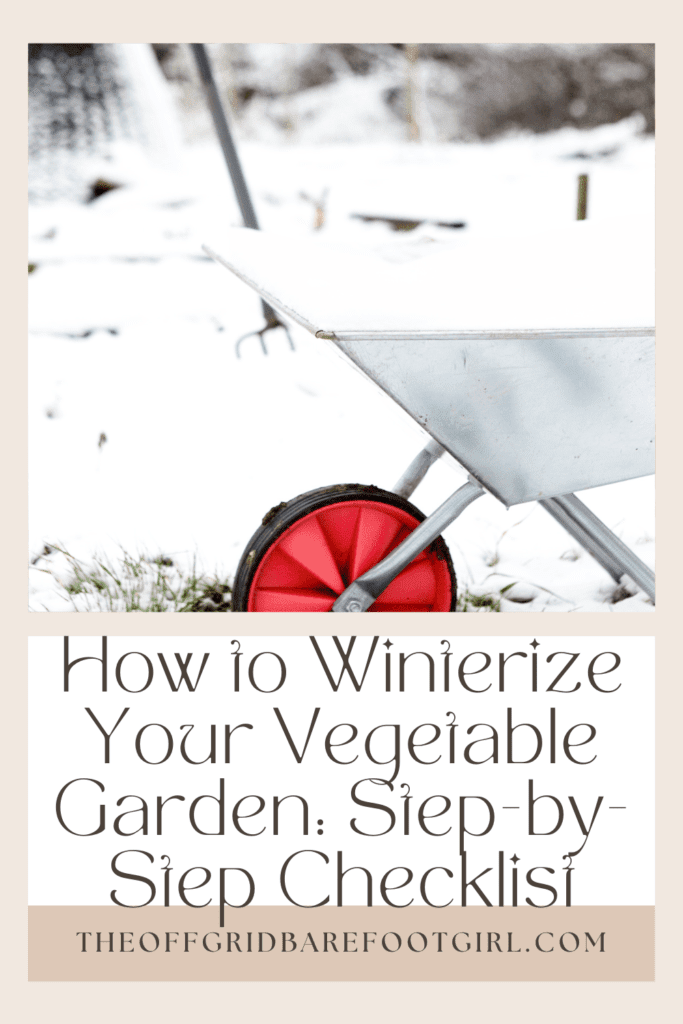
Introduction to Winterizing Your Vegetable Garden
Understanding the Importance of Winterizing
As the temperature drops and frost starts to nip at our noses, it’s important to prepare our vegetable gardens for the harsh winter ahead. Winterizing your garden helps protect plants, soil, and equipment from cold temperatures, frost, and other winter hazards. It ensures that your garden stays healthy and ready for the next growing season.
Benefits of Winterizing Your Vegetable Garden
Winterizing your vegetable garden not only prevents plant damage, but also offers several benefits. By cleaning up your garden and removing dead or diseased plants, you reduce the risk of pests and diseases spreading during the winter. Protecting the soil helps retain nutrients and prevents erosion, while covering plants can shield them from frost, wind, and extreme temperature fluctuations. Winterizing also makes spring gardening easier, as you’ll have a head start with a well-maintained garden.
Clearing Out and Cleaning Up the Garden
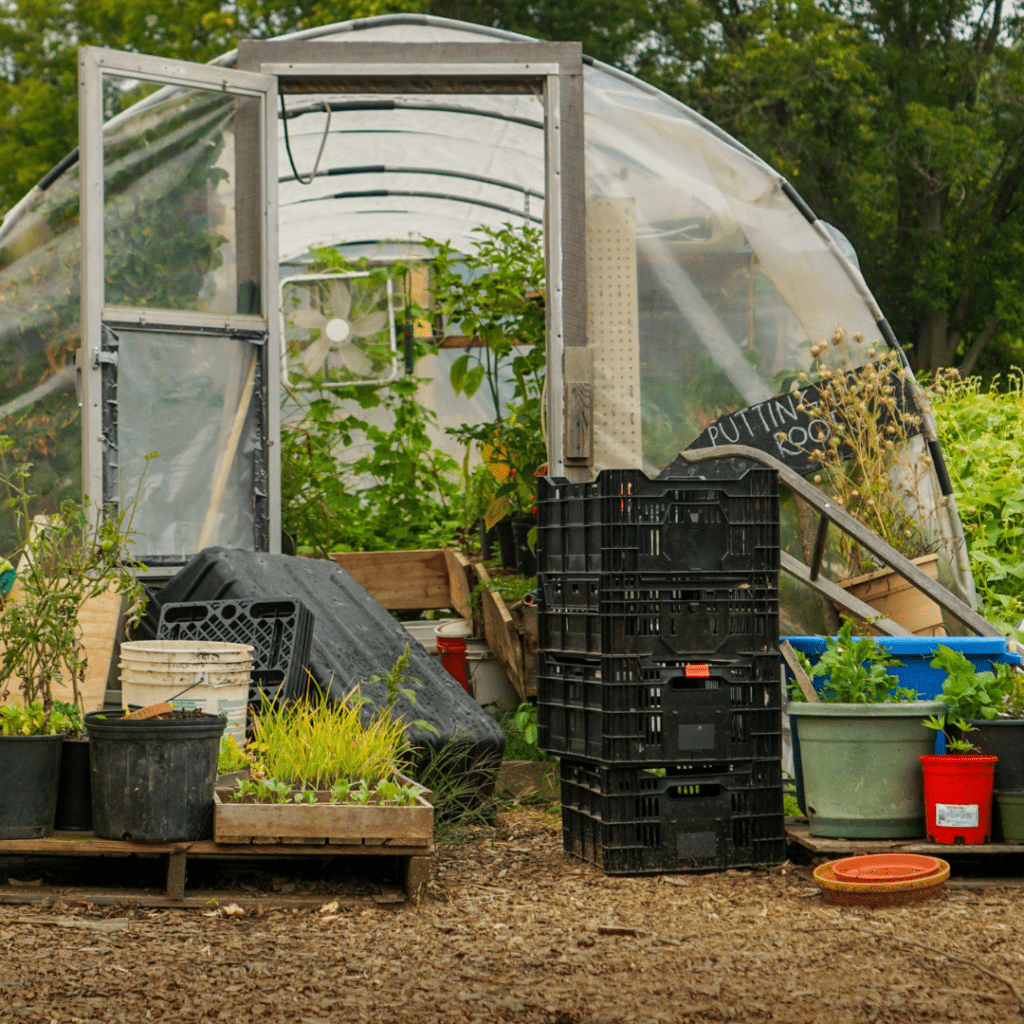
Removing Dead and Diseased Plants
Before winter sets in, take the time to remove any dead or diseased plants from your vegetable garden. These plants can harbor pests and diseases over the winter months, which can then spread to healthy plants in the spring. Cut back dead plant material and dispose of it properly to limit the risk of infestations.
Clearing Plant Debris and Weeds
Clearing out plant debris and weeds is an essential step in winterizing your garden. Removing fallen leaves, twigs, and other debris helps prevent moisture buildup and the growth of mold or rot. Additionally, pulling out weeds ensures that they won’t compete with your plants for nutrients when spring arrives.
Disposing of Garden Waste
Once you’ve cleared your garden of dead plants and debris, it’s important to dispose of the waste properly. You can add disease-free plant material to compost piles, but avoid adding any diseased plants or weeds with seeds. Bag up any infected or pest-infested plants and dispose of them in yard waste disposal areas or through municipal collection services.
Protecting Soil and Plant Beds
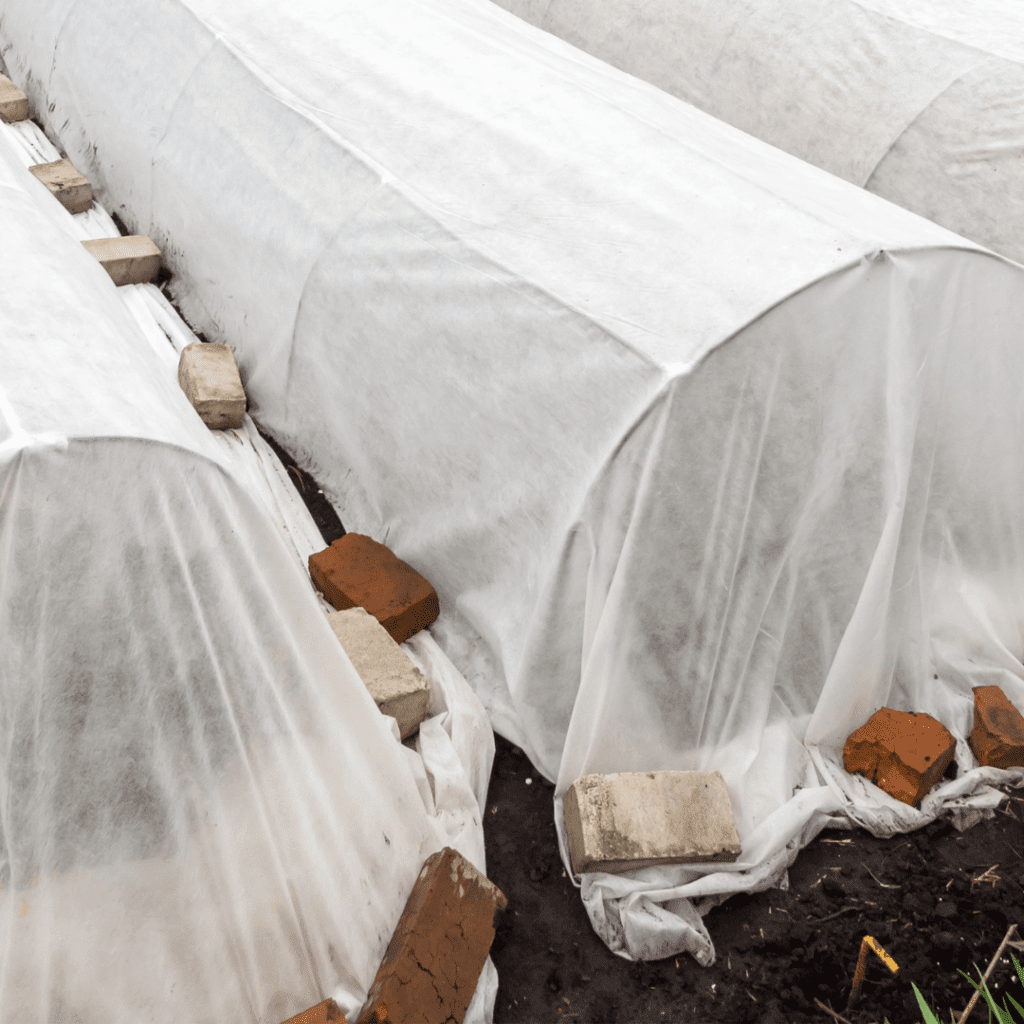
Adding Organic Matter to the Soil
Winter is an ideal time to nourish your soil. Add organic matter such as compost or well-rotted manure to the soil surface and gently work it in. This improves soil structure, enriches nutrient content, and promotes beneficial microbial activity during the dormant period.
Applying a Layer of Mulch
Covering your vegetable garden beds with a layer of mulch provides protection against extreme temperature fluctuations and helps retain moisture. Organic mulch like straw, leaves, or wood chips can be spread evenly around the plants. This helps insulate the soil, preventing it from freezing and thawing too rapidly.
Using Protective Coverings for Plants
For more delicate plants that can’t withstand freezing temperatures, consider using protective coverings like row covers or frost blankets. These lightweight fabrics provide an extra layer of insulation and keep plants warmer during winter nights. Secure the coverings with stakes or hoops to prevent them from blowing away in strong winds.
Preparing and Storing Tools and Equipment
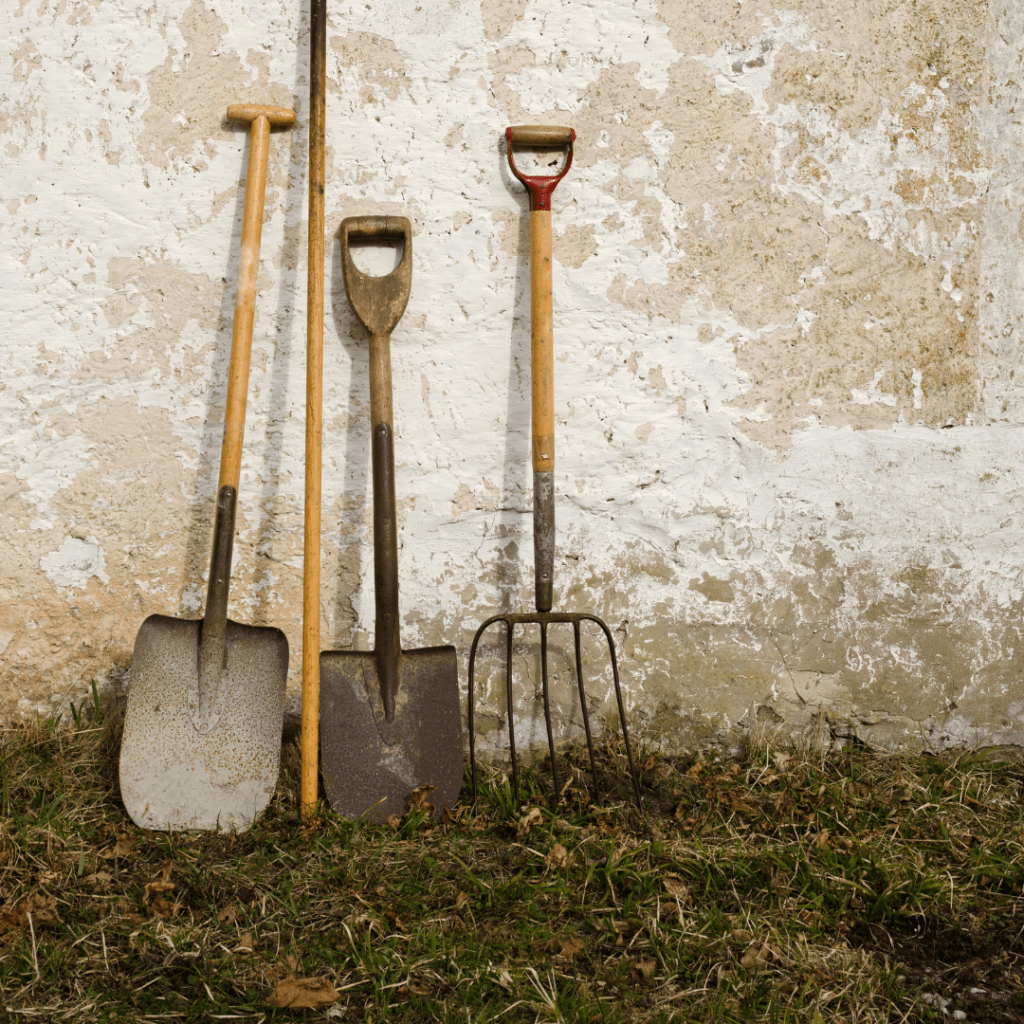
Cleaning and Sharpening Garden Tools
Before storing your garden tools for the winter, take the opportunity to clean and sharpen them. Remove any dirt or debris using a stiff brush, and give them a thorough clean with soap and water if necessary. Sharpen the blades of cutting tools like pruners and shears to ensure they’re ready for action when spring arrives.
Properly Storing Garden Tools
Store your garden tools in a dry and sheltered location to protect them from rust and damage. Hang them on hooks or store them in a designated tool shed or garage. Consider using a protective coating, such as a light coat of oil, to further prevent rust during the winter months.
Organizing and Inventorying Garden Supplies
Lastly, take a moment to organize and inventory your garden supplies. Remove any empty or expired containers, and make a note of any supplies you’ll need to restock before the next growing season. This way, you’ll be well-prepared when it’s time to start gardening again.
Selecting and Applying Mulch and Compost
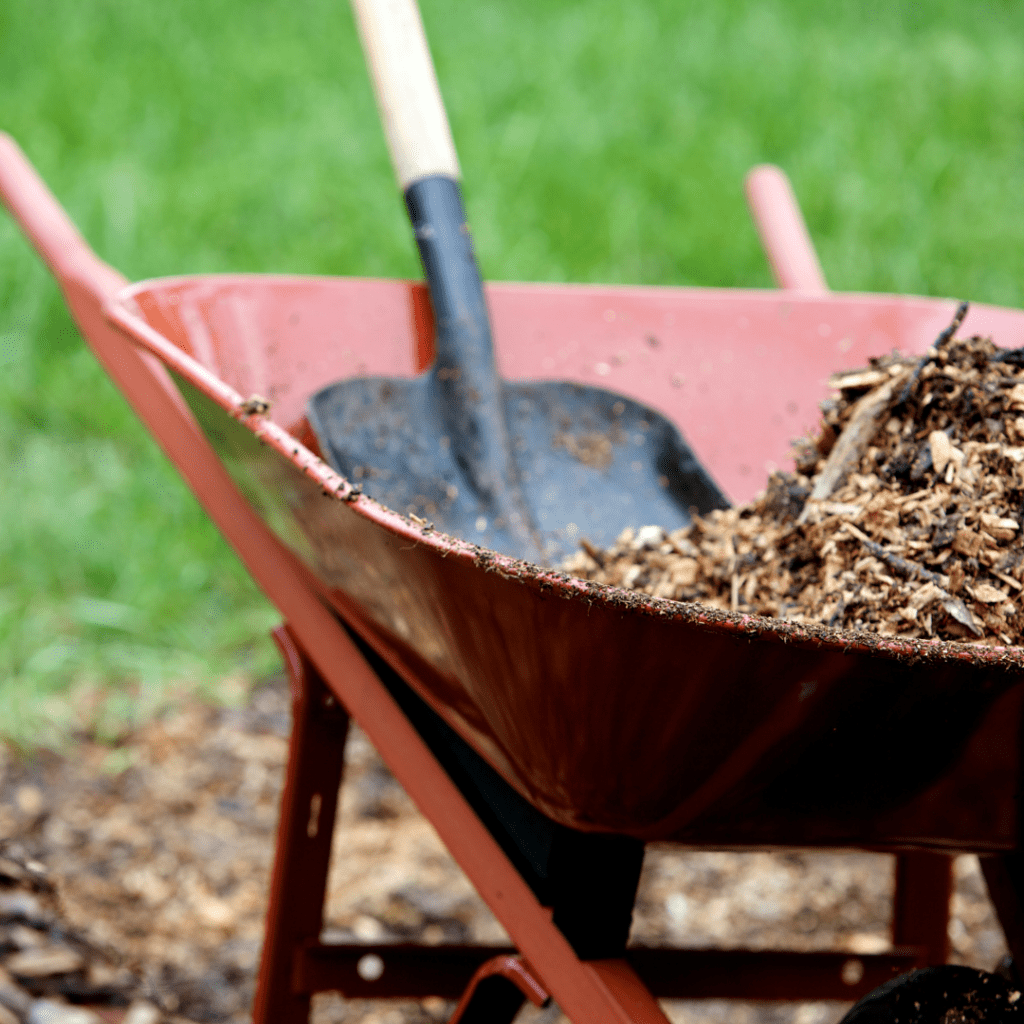
Choosing the Right Mulch for Winter
When it comes to winterizing your vegetable garden, mulch is your best friend. Not only does it help insulate the soil, but it also prevents weed growth and conserves moisture. But before you start throwing mulch everywhere, it’s important to choose the right type. Straw, shredded leaves, and wood chips are all great options for winter mulch. Just make sure you avoid using fresh grass clippings, as they can create a slimy mess when they decompose.
Applying Mulch to Protect Plants and Soil
Now that you have your desired mulch, it’s time to apply it to your garden beds. Start by clearing away any debris or weeds. Then, spread a thick layer of mulch around your plants, making sure to cover the soil evenly. Be careful not to pile it too close to the base of your plants, as this can lead to rot. Aim for a mulch layer that’s about 2-3 inches deep. Don’t worry if it looks like your garden is ready for a cozy winter nap – that’s exactly what you want!
Using Compost to Improve Soil Health
In addition to mulch, compost is another secret weapon for winterizing your vegetable garden. It not only adds essential nutrients to the soil, but also improves its structure and drainage. Spread a layer of compost on top of your garden beds before applying mulch. You can use homemade compost or purchase it from your local garden center. Either way, your plants will thank you for the extra boost of goodness.
Managing Pest and Disease Control
Identifying Common Winter Pests
Just because it’s winter doesn’t mean pests take a break. Some sneaky critters, like slugs and snails, thrive in cooler temperatures. Others, like aphids and spider mites, can find refuge in your greenhouse or indoor garden. Stay vigilant and keep an eye out for signs of pest infestations, such as chewed leaves or sticky residue. Identifying the culprits early on will make it easier to implement the appropriate pest control measures.
Implementing Natural Pest Control Methods
Raiding your vegetable garden with chemicals is never fun, especially when you’re trying to grow organic produce. Instead, opt for natural pest control methods to keep those pesky critters at bay. For example, you can try introducing beneficial insects, like ladybugs and lacewings, which feast on aphids. You can also create simple barriers, such as copper tape, to deter slugs and snails. Remember, a little creativity and some well-placed defenses can go a long way in protecting your precious veggies.
Treating and Preventing Diseases in Winter
Winter can be a breeding ground for diseases in your vegetable garden. Cold, damp conditions create the perfect environment for fungal infections, such as powdery mildew and root rot. To prevent these diseases from taking hold, make sure you provide good air circulation by spacing your plants appropriately. Avoid overhead watering, as it can increase humidity and promote disease. If you do spot any signs of infection, promptly remove and dispose of the affected plants to prevent further spread.
Properly Pruning and Trimming Plants
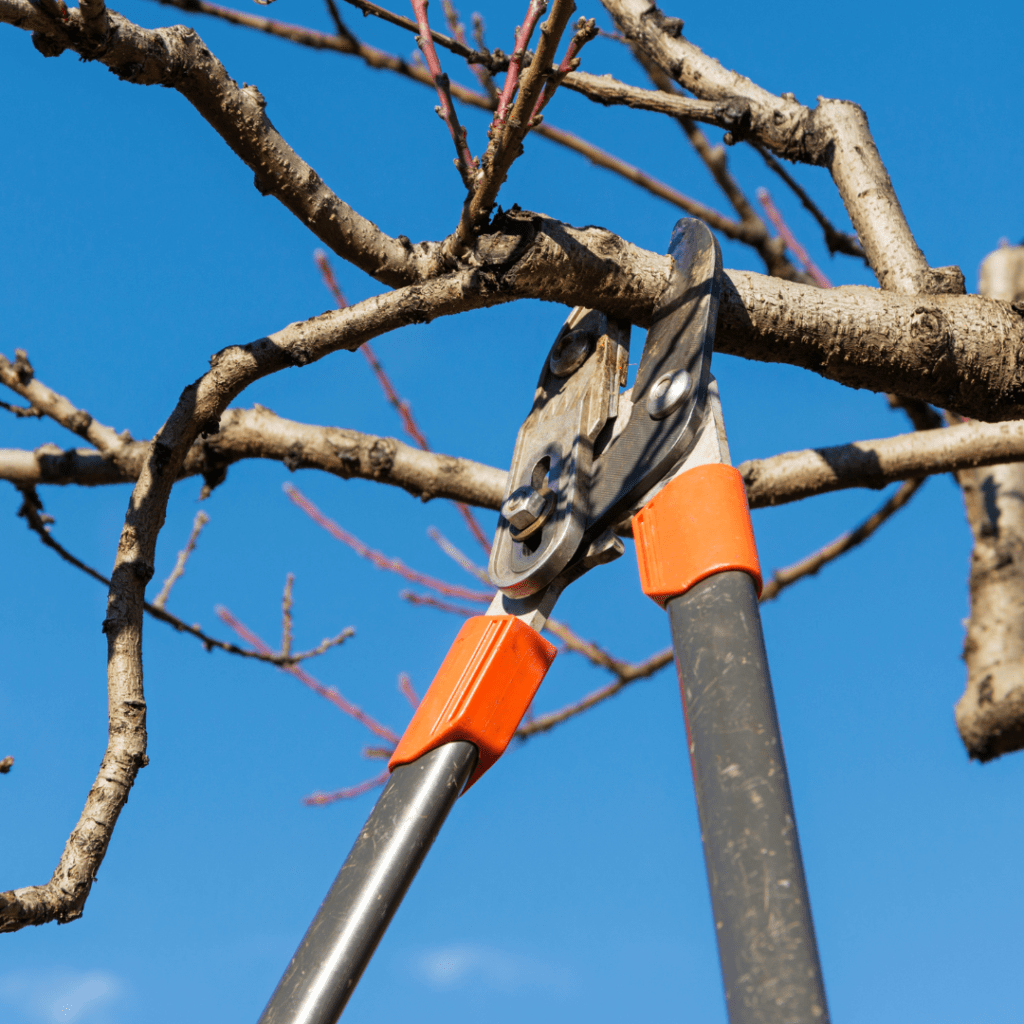
Understanding Winter Pruning Techniques
Pruning in winter? Absolutely! Proper pruning during the colder months can promote healthier and more productive plants come spring. Winter pruning involves removing dead or damaged branches, shaping plants for better structure, and thinning out overcrowded growth. Just remember to research the specific pruning needs of your plants, as not all vegetables or fruit trees should be pruned in winter.
Pruning Fruit Trees and Bushes
Fruit trees and bushes benefit greatly from winter pruning. Start by removing any dead or diseased branches, as well as any that are crossing or rubbing against each other. Next, thin out the branches to allow more light and air circulation. This will encourage strong growth and better fruit production. Be sure to use sharp pruning shears and make clean cuts at a slight angle.
Trimming Perennials and Shrubs
Perennials and shrubs also benefit from a little winter trimming. Remove any dead stems or foliage, as well as any weak or overcrowded growth. You can also shape your shrubs to maintain their desired form. For perennials, it’s essential to leave some foliage above ground to protect the plant’s crown from frost. Remember, a little haircut now will lead to healthier and more vibrant plants when spring arrives.
Monitoring and Maintaining the Garden Throughout the Winter
Checking for Watering Needs
While it may seem counterintuitive, your vegetable garden still needs some watering during winter. Although plants are not actively growing, they still need moisture to survive. Check the moisture level of the soil regularly and water as necessary. Be mindful of overwatering, as excess moisture can lead to root rot. A good rule of thumb is to water only when the top few inches of soil feel dry.
Protecting Plants from Frost and Freezing Temperatures
Winter can bring frost and freezing temperatures that can harm your plants. Thankfully, there are ways to protect them. Covering your plants with frost blankets or even old bedsheets can provide insulation and prevent frost damage. Additionally, consider using row covers or cold frames to create a mini greenhouse effect. And don’t forget about potted plants – bring them indoors or place them in a protected area to shield them from freezing temperatures.
Inspecting and Addressing Any Issues
Lastly, take the time to regularly inspect your winter vegetable garden for any potential issues. Look out for signs of nutrient deficiencies, pest infestations, or disease outbreaks. If you spot any problems, address them promptly to prevent further damage. Remember, even during the cold and dormant months, your garden still needs a little love and attention. So grab your hot cocoa, put on your winter gardening gloves, and give your plants the care they deserve.
Conclusion
In conclusion, winterizing your vegetable garden is an investment of time and effort that yields significant rewards. By taking proactive steps to clear out debris, protect the soil, and maintain the health of your plants, you are setting the foundation for a thriving garden when spring arrives. Remember to regularly monitor your garden throughout the winter, addressing any issues that arise promptly. By following this step-by-step checklist, you can ensure the longevity and productivity of your vegetable garden and enjoy a bountiful harvest in the seasons to come.
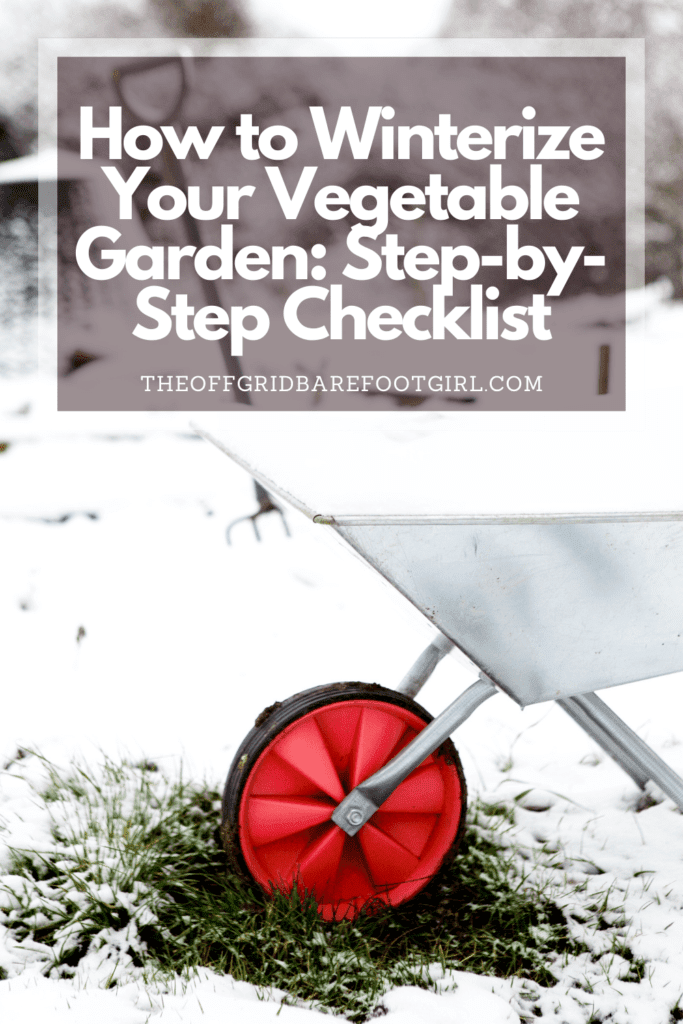
Frequently Asked Questions
1. When is the best time to start winterizing my vegetable garden?
The timing for winterizing your vegetable garden depends on your specific climate and the anticipated arrival of frost and freezing temperatures. As a general rule, it is recommended to start the winterization process a few weeks before the first expected frost date in your region. This allows you enough time to complete all necessary tasks and ensure your garden is adequately protected.
2. Can I still harvest vegetables from my garden during the winter?
Yes, it is possible to continue harvesting vegetables from your garden during the winter season. Some cold-hardy vegetables like kale, spinach, and carrots can withstand frost and continue to grow. Additionally, you can use protective coverings, such as row covers or cold frames, to extend the growing season and provide extra protection for your crops.
3. Do I need to remove all plant debris from my garden before winterizing?
Clearing out plant debris from your garden before winterizing is highly recommended. Removing dead or diseased plant material helps prevent the spread of pests and diseases during the winter months. It also reduces the risk of attracting rodents or other unwanted critters to your garden. However, you can leave some plant material, such as dried stalks, for extra insulation and protection if desired.
4. Is it necessary to apply mulch and compost to my vegetable garden in winter?
Applying mulch and compost to your vegetable garden in winter is beneficial for several reasons. Mulch helps regulate soil temperature, retain moisture, and suppress weed growth. It also acts as a protective layer, shielding plant roots from extreme cold and frost. Similarly, adding compost enriches the soil, improves its structure, and provides essential nutrients to support plant health. Both mulch and compost aid in maintaining a healthy garden ecosystem throughout the winter season.
Winterize Your Garden Checklist Printable
If you’re looking to prep your garden for winter, look no further than my FREE Winterize Your Garden Checklist printable. It’s got everything you need to ensure your plants and soil stay healthy during the chilly months. Take a few moments to check off this handy checklist, and you’ll have a winter-ready garden that’ll bounce back beautifully once the warmer weather arrives!
Summary
I hope I have inspired you to winterize your vegetable garden with these tips and products.
If you were encouraged by this post, I invite you to check out my FREE Printables Page for fun free printables, planners, and charts.
ENTER MY FREE Printables Page HERE
Here are some more of my composting and gardening inspiration posts to check out!
How to Win a Giant Pumpkin Contest
How to Grow a Fall Garden: 9 Best Fall Crops
Clever Ways to Incorporate Indoor Composting into Your Home
How to Start Composting for the Garden: A Step-by-Step Guide
The Ultimate Guide to Composting in Your Suburban Backyard
Why I Built A Survival Garden in My Backyard
How to Grow A Foodscape Garden From Scratch
16 Best Medicinal Herbs to Grow in Your Garden Now
Blessings,
The Off Grid Barefoot Girl




